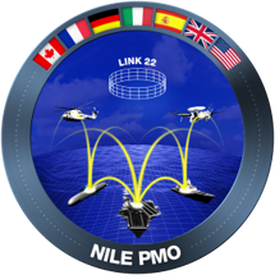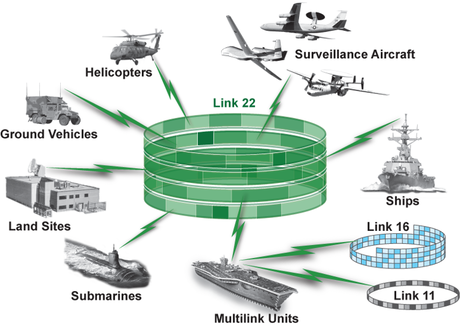About UsLink 22 is a North Atlantic Treaty Organization (NATO) secure radio system that provides Beyond Line-Of-Sight (BLOS) communications. It interconnects air, surface, subsurface, and ground-based tactical data systems, and it is used for the exchange of tactical data among the military units of the participating nations.
The Link 22 Project is conducted collaboratively by seven nations under the aegis of a Memorandum of Understanding (MOU). The nations are Canada, France, Germany, Italy, Spain, United Kingdom (UK), and the United States (US), with the US acting as the host nation. Link 22 was developed to replace and overcome the known deficiencies of Link 11 and to complement and interoperate easily with Link 16. This program is called "NATO Improved Link Eleven", which is abbreviated to "NILE". The tactical data link provided by the NILE system has been officially designated Link 22. |
Our History |
During the late 1980s, NATO, agreeing on the need to improve the performance of Link 11, produced a mission need statement that became the basis for the establishment of the NATO Improved Link Eleven (NILE) Program. This program specified a new tactical message standard in the NATO standardization agreement (STANAG) 5522 to enhance data exchange and provide a new layered communications architecture. This new data link was designated Link 22 by NATO.
The NILE program is funded and collaboratively conducted by seven nations under the aegis of a memorandum of understanding (MOU). A steering committee controls the complete NILE program. The program is managed by the Project Management Office (PMO), located at the Naval Information Warfare Systems Command (NAVWAR)'s Program Management Warfare (PMW) 150 in San Diego, California. The PMO consists of a representative from each participating nation and a Project Manager from the US. The Link 22 goals are:
An overview and introduction to Link 22 is provided by the "Link 22 Guidebook". This Guidebook has been written in a manner that provides information for Link 22 operators, planners, managers, executives, developers, and testers. |

This web space contains only public domain information; for more information please contact the
NATO Improved Link Eleven Project Management Office (NILE PMO)
NATO Improved Link Eleven Project Management Office (NILE PMO)

